This article needs additional citations for verification .(February 2024) |
Oahu National Wildlife Refuge Complex is a National Wildlife Refuge complex in the state of Hawaii.
Contents
A fire burned 2.5 miles in October 2023. [1]
This article needs additional citations for verification .(February 2024) |
Oahu National Wildlife Refuge Complex is a National Wildlife Refuge complex in the state of Hawaii.
A fire burned 2.5 miles in October 2023. [1]

Kodiak Island Borough is a borough in the U.S. state of Alaska. At the 2020 census, the population was 13,101, down from 13,592 in 2010. The borough seat is Kodiak.
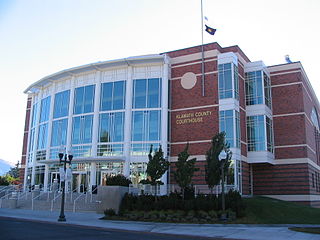
Klamath County is one of the 36 counties in the U.S. state of Oregon. As of the 2020 census, the population was 69,413. The county seat is Klamath Falls. The county was named for the Klamath, the tribe of Native Americans living in the area at the time the first European explorers entered the region. Klamath County comprises the Klamath Falls, OR Micropolitan Statistical Area.

Kaʻena or Kaena Point is the westernmost tip of the island of Oʻahu. In Hawaiian, kaʻena means "the heat". The area was named after a brother or cousin of Pele. The point is designated as a Natural Area Reserve.
Montezuma National Wildlife Refuge is a wildlife preserve operated by the United States Fish and Wildlife Service, encompassing part of the Montezuma Swamp at the north end of Cayuga Lake. The 10,004-acre (40.48 km2) preserve is composed of swamps, pools and channels and is a stopping point for migratory birds. It is the largest contiguous wetland complex in the northeastern United States and comprises a portion of the larger Montezuma Wetlands Complex, which is a partnership between the USFWS, the New York State Department of Environmental Conservation, as well as several other non-profit support organizations.
The Mark Twain National Wildlife Refuge Complex was established for the protection of migratory birds including waterfowl, shorebirds, and songbirds. It is located along the Mississippi Flyway, one of the major routes for migrating waterfowl. Refuge units also provide important habitat for big-river fish and a variety of other native wildlife such as deer, fox, beaver, frogs, turtles, and snakes. Key goals are to conserve and enhance the quality and diversity of fish and wildlife and their habitats, to restore floodplain functions in the river corridor, and to provide wildlife-related recreational experiences for the public.
The Stewart B. McKinney National Wildlife Refuge is a 950-acre (384.5 ha) National Wildlife Refuge in ten units across the U.S. state of Connecticut. Located in the Atlantic Flyway, the refuge spans 70 miles (110 km) of Connecticut coastline and provides important resting, feeding, and nesting habitat for many species of wading birds, shorebirds, songbirds and terns, including the endangered roseate tern. Adjacent waters serve as wintering habitat for brant, scoters, American black duck, and other waterfowl. Overall, the refuge encompasses over 900 acres (364.2 ha) of barrier beach, intertidal wetland and fragile island habitats.
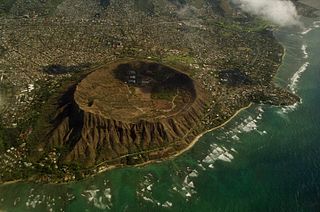
Kāhala, is a neighborhood in Honolulu, Hawaii. Kahala contains a large concentration of luxury real estate and beachfront properties. It consists of approximately 1,200 homes.
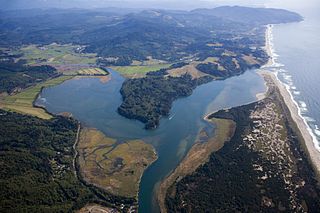
Nestucca Bay National Wildlife Refuge is a U.S. National Wildlife Refuge on Oregon's coast. It lies in southern Tillamook County, on the state's northern coast. It is one of six National Wildlife Refuges comprising the Oregon Coast National Wildlife Refuge Complex and supports one tenth of the world's dusky Canada goose population. The refuge contains at least seven types of habitat, including tidal marsh, tidal mudflats, grassland, woodland, pasture, forested lagg—a transition between raised peat bog and mineral soil—and freshwater bogs, including the southernmost coastal Sphagnum bog habitat on the Pacific Coast.
The Highwood Mountains are an island range which cover approximately 4,659 km2 of the Central Montana Alkalic Province in north central Montana in the U.S. They are in Chouteau, Judith Basin and Cascade counties and lie east of Great Falls and Benton Lake National Wildlife Refuge, at the northern end of the Lewis and Clark National Forest. The mountains were included in Highwood Mountains National Forest until 1908, when the unit became part of Lewis and Clark National Forest.

Hakalau Forest National Wildlife Refuge is a protected area on the Big Island of Hawaiʻi. It is one of two units, along with the Kona Forest National Wildlife Refuge that is managed as part of the Big Island National Wildlife Refuge Complex. Access to the Kona Forest is restricted since it contains several endangered species.

James Campbell National Wildlife Refuge is a National Wildlife Refuge on the island of Oʻahu, Hawaii. It was established in 1976 to permanently protect an ecologically-intact unit and to provide habitat for native and migratory fauna and native flora. It established critical habitat for Hawaii's four endangered waterbirds, the ʻalae kea, koloa maoli, ʻalae ʻula, and āeʻo and many migratory seabirds, endangered and native plant species, and the endangered Hawaiian monk seal and green sea turtle. It also provides increased wildlife-dependent public uses and flood control within the refuge and the local community.
Oʻahu Forest National Wildlife Refuge was established in 2000 to protect fish, wildlife, and plants which are listed as threatened or endangered species. The refuge encompasses approximately 4,525 acres (18.31 km2) and is managed by the U.S. Fish & Wildlife Service.
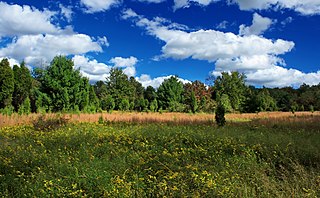
The Cherry Valley National Wildlife Refuge is a National Wildlife Refuge in Monroe County, Pennsylvania.
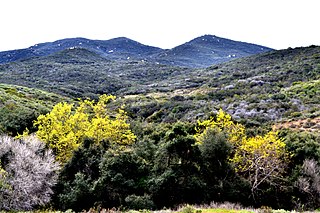
San Diego National Wildlife Refuge is a National Wildlife Refuge in California. It is part of the San Diego National Wildlife Refuge Complex. A variety of habitats from coastal sage scrub and chaparral to oak woodland and freshwater marsh describe this inland refuge in San Diego's backcountry.
The Big Island National Wildlife Refuge Complex is a protected wildlife refuge administered by the U.S. Fish and Wildlife Service located on Hawaiʻi Island in the state of Hawaii. It consists of Hakalau Forest on the windward side of Mauna Kea and Kona Forest on the western side of Mauna Loa.
Long Island National Wildlife Refuge Complex is a National Wildlife Refuge complex in the state of New York. All of the component refuges are located on Long Island.

Malone Springs is a watershed within the Fremont-Winema National Forest in Klamath County, Oregon, U.S. It is 25 miles (40 km) northwest of Klamath Falls on Oregon Route 140. It provides access to a multi-mile canoe route along the westernmost edge of the Upper Klamath National Wildlife Refuge. Malone Springs' location allows for close encounters with the marsh of Upper Klamath Lake and views of old growth, mixed conifer forest on neighboring Pelican Butte immediately to the west.

Pearl Harbor National Memorial is a unit of the National Park System of the United States on the island of Oahu, Hawaii. The John D. Dingell, Jr. Conservation, Management, and Recreation Act removed the site from the World War II Valor in the Pacific National Monument on March 12, 2019, and made it a separate national memorial. It has an area of 21.3 acres (0.086 km2).
Washington Maritime National Wildlife Refuge Complex is an administrative grouping of six National Wildlife Refuges in Washington, managed by the United States Fish and Wildlife Service. It includes:
21°40′41″N157°57′00″W / 21.67812°N 157.95009°W